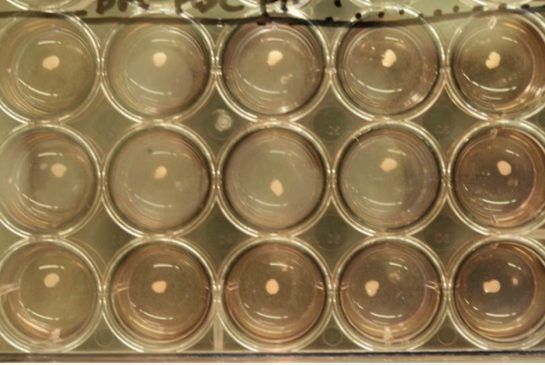Japanese scientists announced a major advance in regenerative medicine Wednesday after rudimentary liver ‘buds’ that were grown in a lab and transplanted into mice showed signs of maturing into functional human livers.
The research, which is published in this week’s issue of Naturethe journal Nature, is the first-ever report of a working organ coaxed into existence from human-induced pluripotent stem cells (iPSCs).
Facing an omnipresent shortage of organs harvested from human donors, scientists around the world have been racing to grow ones from scratch using iPSCs, adult body cells that have been reprogrammed to act like embryonic stem cells and can therefore give rise to different types of tissue, but that also skip past the controversy of destroying embryos for research.
The authors of the new research are “at the cutting edge of the story,” said Michael Sefton, a professor at the University of Toronto’s Institute of Biomaterials and Biomedical Engineering. Sefton called the announcement “a milestone.”
But while experts around the world hailed the research as a major advance, Sefton and others cautioned that much work lies ahead before the creation of stem-cell derived organs that can be transplanted into humans — scaling up the experiment from a mouse model could take years.
The researchers described their work as a “proof of principle.”
The research team, led by Takanori Takebe at the Yokohama City University Graduate School of Medicine, combined iPSCs that had been reprogrammed into hepatic endodermal cells, which are associated with the very early stages of liver development, and other cells that occur in embryos when organs are forming.
To their surprise, within 48 hours, the two-dimensional cell cocktail organized itself into three-dimensional tissue clusters that were visible to the naked eye. Until now, most researchers trying to create functional tissues have usually seeded “scaffolding” with iPSCs. In Takebe’s lab, the cells self-organized.
In a conference call with international media, Takebe recalled his reaction to the moment they realized the cells had self-organized, an accident of mixing those particular cell types: “gobsmacked” was the word provided by a translator.
The buds are the equivalent of what a liver looks like inside an embryo at about five or six weeks gestation, Takebe said. Tests showed that the liver buds were vascularized — in other words, threaded with blood vessels — which is a crucial hurdle for the creation of complex tissue structures.
When the buds were transplanted into mice, they matured and showed signs of performing some of the same functions that human livers perform. The mice tested positive for the creation of two proteins associated only with human livers, not mice livers. And the mice were able to metabolize two chemical compounds, showing they could perform all-important detoxification functions.
In mice suffering from organ failure, transplantation of the liver buds significantly increased their chances of survival, the research shows.
The buds were transplanted into the mice brains, which allowed the researchers a better window to watch what happened afterwards, and also transplanted into two different locations in the abdomen. The next stage of the research will be to vastly decrease the size of the liver buds to 100 microns from their current size of five millimetres so that the researchers can inject the buds into the mice blood stream and see what happens.
Takebe said the first human trials of the liver buds could be on infants with liver failure who would die without any treatment, but even that is years away.
In the meantime, the buds could be used to provide a better pathway for testing drugs before they hit the markets. To probe toxicity, drugs are tested on animal models and using organs from corpses, both of which are expensive and prone to signalling false results. Growing mini-organs in a lab could produce tissues for testing drugs that are both cheaper and more reliable than the current system.
Takebe said the group had made advances in creating self-organized pancreas and kidney buds as well.
Story Source:
The above story is reprinted from materials provided by thestar, Kate Allen Science and Technology reporter.





